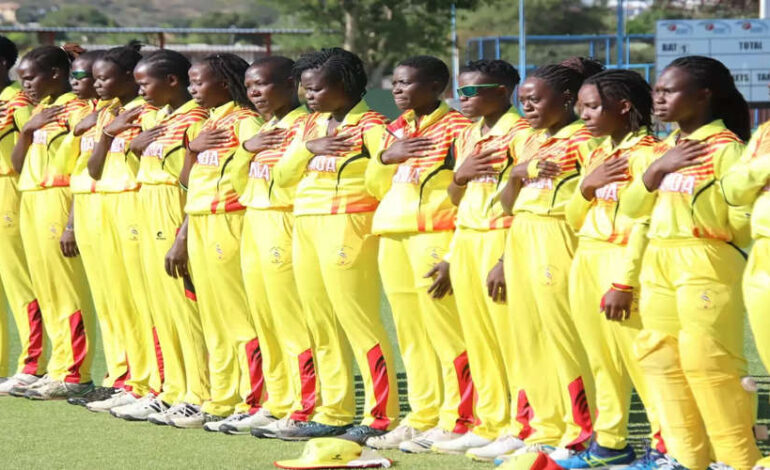Hip-hop has quickly taken root in the Kenyan popular music scene, with local artists building on the genre’s American roots, translating it to the local context and using it to transform the lifestyles of young people in urban centres.
The story of Kenya resembles a chapter from the book Animal Farm, with continuous struggles that have shaped the country until its current form. Kenya began with a group of ethnic Bantu, Cushitic and Nilotic tribes loosely living together as harmonious neighbours until the arrival of the British colonialists in the late eighteenth century. This elicited a series of early resistance cases caused by the Kenyan tribal chiefs and freedom fighters such as Koitalel of the Nandi, Mekatilili of the Giriama and Waiyaki of the Kikuyu. The Kikuyu, being the most populous Kenyan tribe, felt the effects of land scarcity more as most of it was occupied by colonialists. They became vocal about land and freedom and were singled out. The British ruled over Kenya from the early 1880s and it wasn’t until the 1940s that real armed freedom revolt started. Kikuyu tribal warriors known as the Mau Mau began an uprising that would forcefully give Kenya its independence in 1963. But freedom hasn’t been an easy road for Kenyans, even after gaining independence.
Kalamashaka and the Genesis of Kenyan Hip-Hop

The British left behind a politically divided, developing nation that was engrossed in tribalism, classism and a silent epidemic called urban poverty. Before colonialism, Kenyans weren’t accustomed to urban living but due to modernisation, city ghettos and slums emerged. Conditions are so tough in these ghettos that the only way the youth can cry out is by rapping. From the neighbourhood of Dandora emerged Kalamashaka, Kenya’s first popular hip-hop group, with their smash hit ‘Tafsiri Hii’. Their lyrics were fierce, translated as: “Understand this – life in Dandora is too rough, so when I feel like crying, I pick up the microphone. Understand this: even though we are not doing well, we still have major hope, listen keenly”. This was the beginning of a movement in Kenya and East Africa. They single-handedly laid the foundation for an era of confidence in youth expression, literary participation, political awareness and social activism.
The politics of the day was concerned with how to remove the oppressive regime of Kenya’s second president, Daniel Arap Moi, an anti-reformist known for his dictatorial ways. Following in the footsteps of Kenya’s freedom fighters before them, Kalamashaka formed an outfit of over 30 rappers called Ukoo Flani Mau Mau (A Clan called Mau Mau). This led to a vibrant hip-hop scene in Nairobi, which gave Kenya its most politically charged music, such as their 2004 album, Kilio Cha Haki (Cry For Justice), with songs such as ‘Angalia Saa’ (Check the Time).
Kalamashaka’s success was not achieved alone. Their career was boosted by a major Kenyan music producer, Tedd Josiah, and businessman David Muriithi, who had spotted their talent and offered to record them at their studio, Audio Vault. Josiah, who had the knack for spotting Kenyan talent, had seen them performing at the Florida Nightclub afternoon jam sessions. He invited them to what was then the most popular recording studio, where they were able to record their music and cultivate their image. This was the same studio where stars like Hardstone had recorded his reggae hit ‘Uhiki’, which had dominated the airwaves. If Josiah and Muriithi had not believed in supporting local talent, Kalamashaka would have never recorded their initial songs. Because they were connected to mainstream media, they also had a hand in making it appealing for Kenyan radio to play local hip-hop. Kalamashaka brought in the hip-hop element and would go on to inspire a new generation of young musicians.
Also making headway at that time was the duo K-South from another inner city hood, Kariobangi South. They made hip-hop with a lighter touch, addressing societal issues in a humorous manner. They had hits such as ‘Tabia Mbaya’, ‘Kapuka’ and ‘Nairoberry’. The Umoja-based duo Gidi Gidi Maji, who sang in Luo vernacular (from Western Kenya), entered the scene with the hit ‘Ting Badi Malo’. In 2002 they released ‘Unbwogable’, a song that was adopted as Mwai Kibaki’s presidential campaign for and later earned them a recording deal with Gallo in South Africa. Around the same time, the green Nairobi suburbs gave birth to a influential hip-hop group called Necessary Noise, a trio made up of Wyre and Bamzigi with one of Kenya’s first female rappers, Nazizi, still regarded as the first lady of Kenyan hip-hop. The group’s debut album in 2004 contained chart-topping hits such as ‘Tension’, ‘Kenyan Gal/Kenyan Boy’ and ‘Bless My Room’.
Genge, Boomba and Kapuka
Kenyan hip-hop began to evolve around 2003 with the emergence of new subgenres. A slow-paced style of hip-hop called Genge emerged from a neighbourhood close to Nairobi’s city centre called California, better referred to as Calif. Genge, which means a big crowd of people, became Nairobi’s new music of choice, dominating Kenyan radio airwaves. The genre was spearheaded by rappers Nonini and Juacali, who teamed up with producer Clemo to form Calif Records. Characterised by a slow rapping style similar to talking, Genge gained lots of fans due to lyrics about the streets, neighbourhood girls and thugs. Nonini captured the airwaves with hits such as ‘Manzi Wa Nairobi’ and ‘We Kamu’. Juacali gained fans with his laid back style on tracks such as ‘Kiasi’, ‘Ruka’ and ‘Bidii Yangu’. Other artists on Calif Records include Mejja, Pili Pili, Rata-tat and Jimwat.
In the middle class neighbourhood of South C, the Ogopa DJs were fusing hip-hop with Jamaican dancehall to create a new sound called Boomba. From this stable emerged many popular Kenyan musicians, such as the late E-Sir, Kleptomaniax, Nameless, the late K-Rupt, Big Pin, Manga, Amani and Wahu. It even spread to Uganda with Bebe Cool and Chameleone. A related genre, dubbed Kapuka by hip-hop purists, is characterised by bubblegum beats and repetitive lyrics. The style was promoted by the Kenyan media, due in part to it being deemed ‘harmless’ music with no interest in tackling political or societal issues. The main aim of Ogopa DJs was to get people on the dancefloor, which they did by producing some of the biggest music hits in Kenyan radio history, such as ‘Boomba Train’ by E-Sir featuring Nameless, ‘Ninanoki’ by Amani, ‘Sinzia’, ‘Holiday’ by Nameless and ‘Sitishiki’ by Wahu. These songs are played every day on Kenyan radio.
A New Wave of Rappers
The beginning of the new millennium saw the liberalization of the Kenyan radio industry, with private stations starting up and competing for limited listenership and advertising revenue. Stations grew increasingly concerned with playing music that would sell fast, not caring about the artistic value of the content. The stations were in the business of selling dramatic stories, controversy and news. Hip-hop’s dominance ended because other genres had more dramatic stories. Hip-hop was too real and stood no chance – more commercial genres soon took over. The liberalization of the media meant there was more at stake in the advertising industry. The media was not interested in what the history of hip-hop, these young rappers were of no consequence to them. This killed the hip-hop recording industry because artsts saw no purpose in recording if they could not get airplay. This created a lull in the hip-hop scene in Nairobi with no major songs coming out between 2004 and 2006. Many groups broke up, some performers stopped rapping, while others fell into depression. Something had to be done.
Hip-hop purists came together and started discussing how they could counter the take-over by commercial ‘jiggy rap’ of the radio. Hip-hop in Kenya needed an independent avenue that could hold the movement together. In 2007, Kenyan hip-hop re-emerged through a refreshing event called WAPI (Words And Pictures). The word WAPI also means ‘where’ – asking the question, ‘Where is the Underground?’. Over 5 000 hip-hop heads from all over Nairobi would converge on the British Council on the last Saturday of every month to showcase their rapping and graffiti skills. It was an opportunity for young artists to express themselves, exchange ideas, network and develop. Artists came from all over Kenya, such as Point Blank, Big Mic, Juliani (from Ukoo Flani), Mwafrika, Muki Garang, DJ Zaq, Octopizzo, Rabbit, Moroko, Muthoni, Khaligraph and Kimya. These were the new kings of Nairobi hip-hop – artists who came from the community and cared about social issues. Their freestyles and cyphers paid off: because of it, hip-hop was back on the national scene.
The Future of Kenyan Hip Hop
Today, with multi-million dollar business deals at stake, hip-hop is no longer just about the music – it has become a marketing vehicle for big corporations. Hip-hop has become more professional – it is a career and an avenue out of poverty. Kenyan hip-hop artists no longer rhyme simply to gain street cred and the respect of their peers. They are daring to get a lot more out of rapping. The world has opened up and what is being produced in Kenya can become a global hit in very little time. Kenyan hip-hop artists are making their mark o nthe rest of the world. Female rapper Xtatic, who also honed her skills at WAPI, once earned herself a record deal with international music giant Sony through their affiliate, RockStar4000. Another popular Kenyan hip-hop group, Camp Mulla, became the first East African group to be nominated for the coveted BET Music Awards in the international category.
Octopizzo, who hails from the slums of Kibera, has been one of the most popular hip-hop artists in Nairobi over the last ten years, with songs such as ‘On Top’, ‘Flex’, Ivo Ivo Ivo’ and his latest ‘Zigi Zag’. He first picked up a microphone at WAPI and had never been on stage before that. At WAPI he honed his skills and quickly grew in confidence. Another common face at WAPI, Rabbit alias King Kaka endeared the crowd with his poetic lines and witty rhyme style. He has been at the top of his game with hits like ‘Swahili Shakespeare’, ‘Adisia’, ‘Mtu Hivihivi’ and recently ‘Wajionee’. Rapper Khaligraph son the other hand too has showed his true colours to take his place as the new king of Kenya`s hip-hop battles. His latest tracks ‘Mbona‘, ‘Hiroshima’, and ‘Kwame’ have received substantial airplay.

These are the new faces of Kenyan hip-hop today. The genre has taken on a new dimension. It’s no longer about the slums – it’s about moving away. They are young, hungry and will make sure that hip-hop doesn’t go away anytime soon. It is artists like them that are keeping the hip-hop fire burning in Kenya and opening doors for those to come after them. The industry is growing in leaps and bounds, and the goal for young artists joining the hip-hop game now is to find the right balance community support and financial gain.


